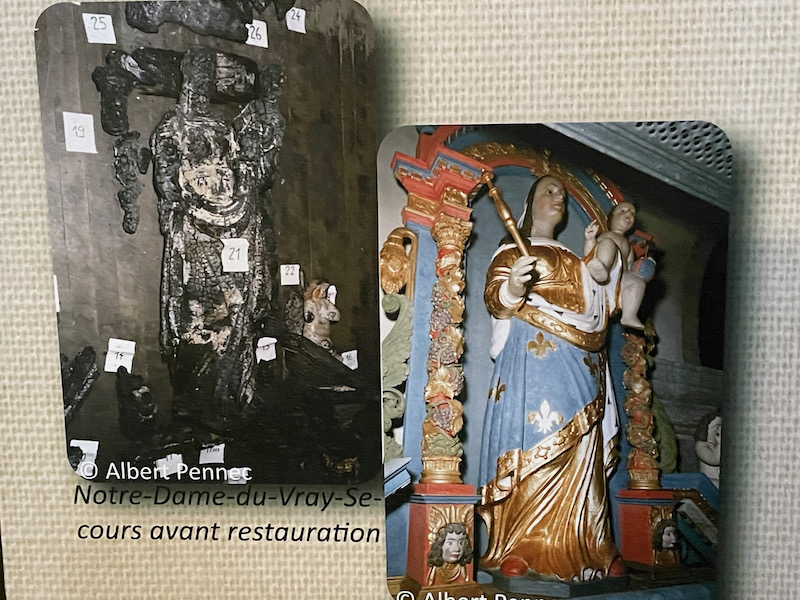Our Blog - Enclos Paroissial of Saint-Thegonnec
Another parish enclosure on our visit, this one was a bit more impressive than some of the other ones. The 2-spire church, the triumphal arch, and the colorful decoration, all display the prosperity of this area in the 1600's. We parked behind the church, but even here, you can see this monumental staircase up to the platform where the enclos is. You can also start seeing the multiple spires, the square bell-tower that has 5 small spires (the one at the top and the 4 around the outside), and all of the Gothic details in the architecture. The construction of the enclos took nearly 2 centuries, starting in 1563 with the construction of the church and the bell tower.
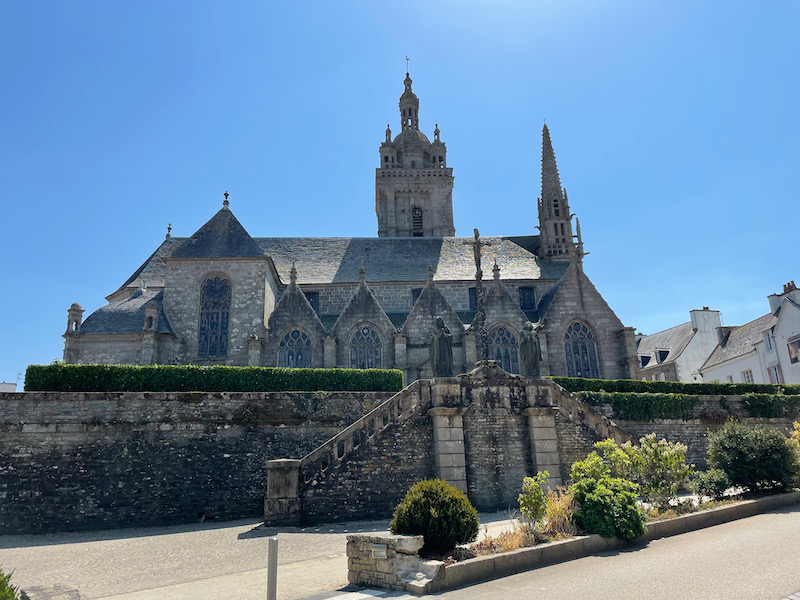
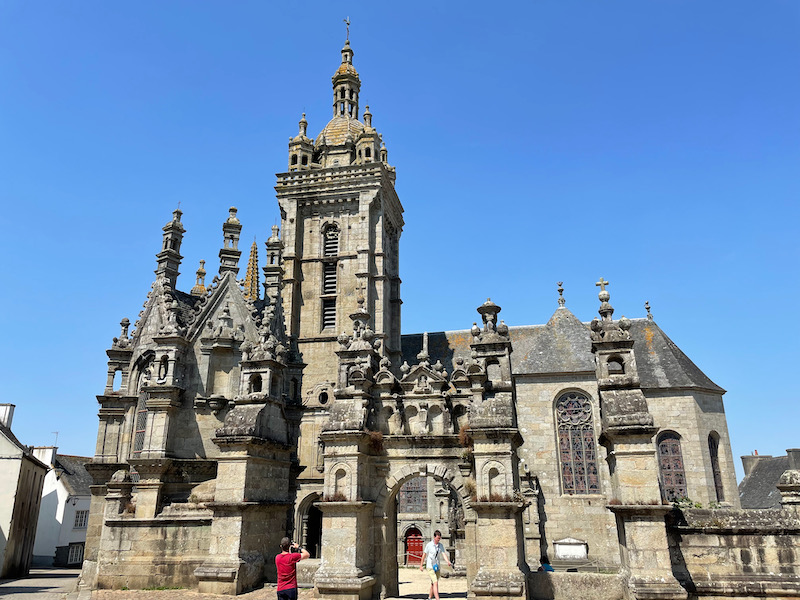
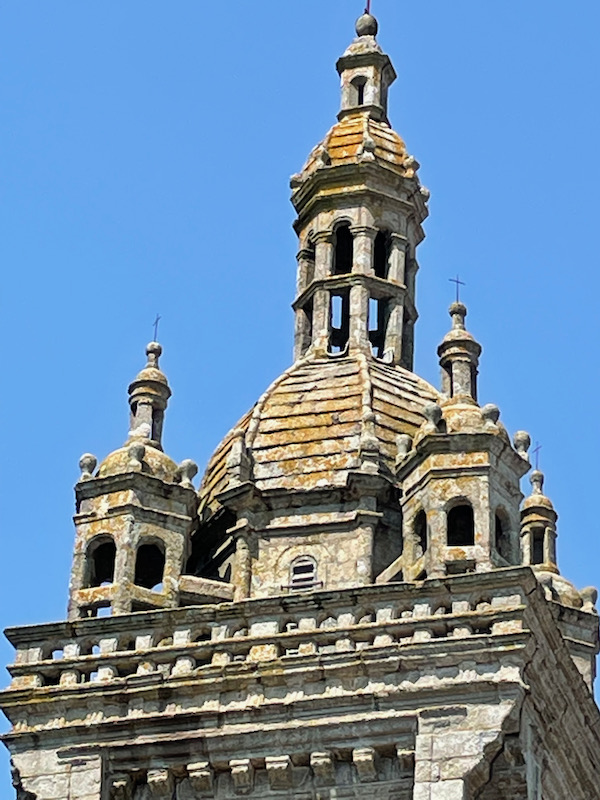
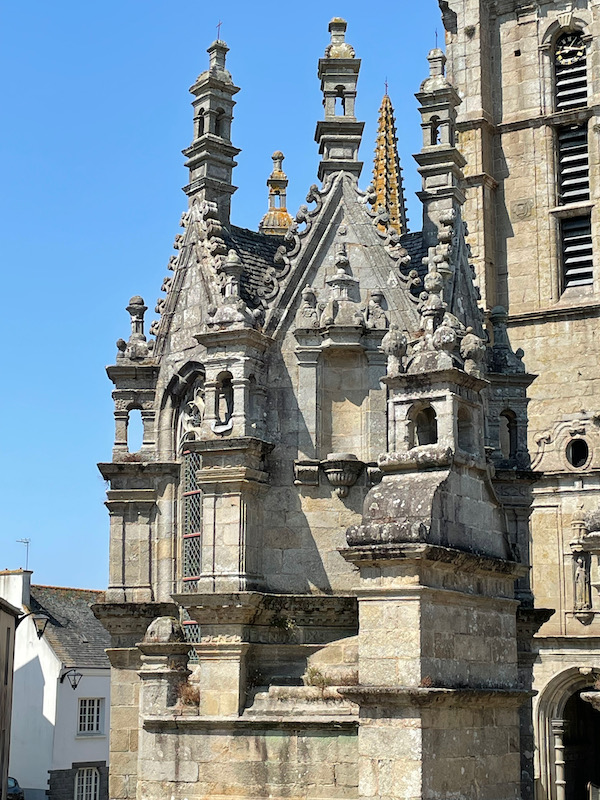
This may look like part of the church, due to its size, but it is actually the Renaissance-style Ossuary. It was built between 1676 and 1682 and, unlike most ossuaries, it never contained any bones. It was dedicated to prayer for the dead and served as a funeral chapel and reliquary. The triangular pediment in the center of the facade houses a statue of Saint Paul Aurélien holding on a leash the dragon he is said to have captured at the Île de Batz. A silver Virgin at the top of the roof faces the small bell tower. There used to be an actual ossuary, which DID contain old bones, on the other side of the enclosure but it was destroyed in 1850.
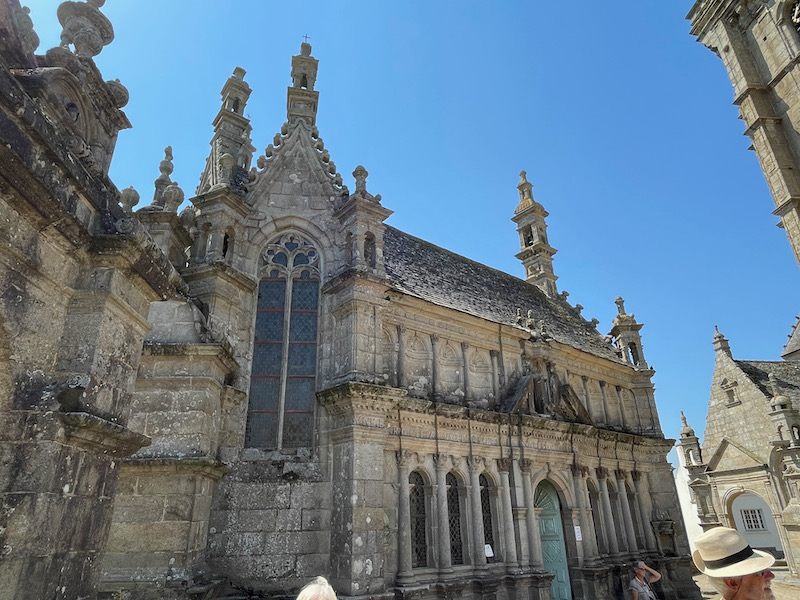
Then I popped back outside to get a picture of the triumphal arch, built in 1587, as it would look entering the church grounds. Just inside the arch is the calvary, which was completed in 1610, is one of the most interesting that I have seen. It is about the Passion of the Christ, and it is quite detailed.
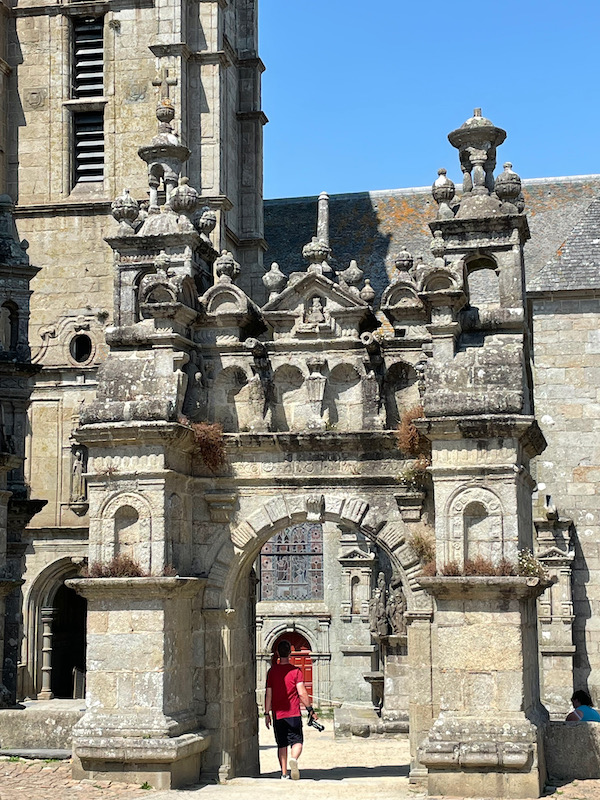
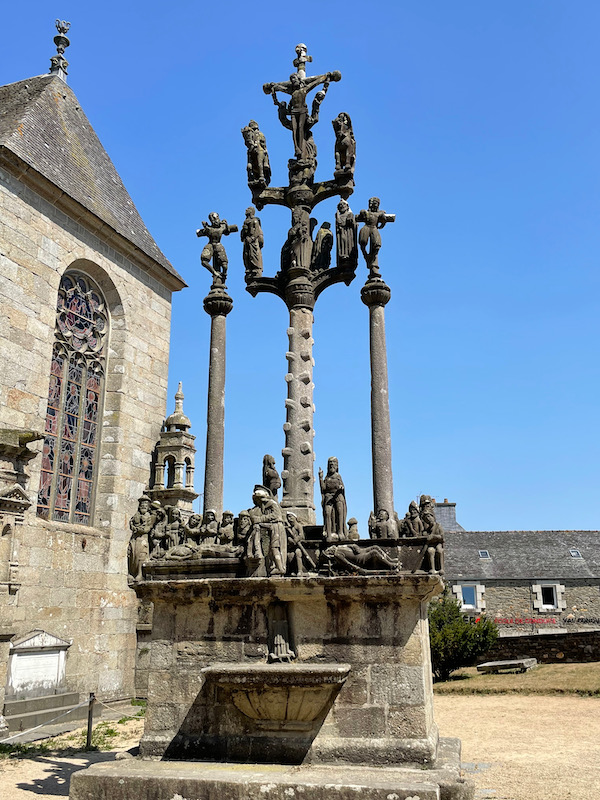
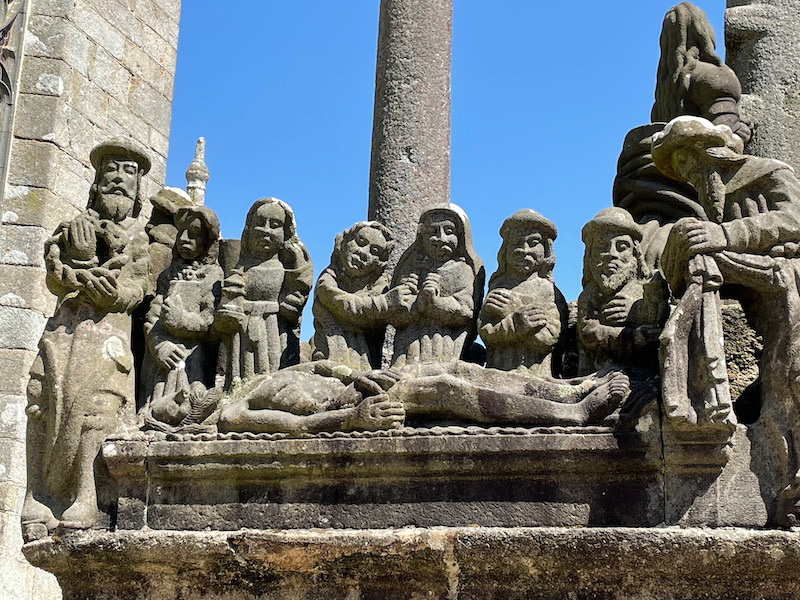
According to legend, Saint Thégonnec, who originally came from Wales and was a disciple of Saint Pol Aurélien, had tamed a deer and used it to pull his cart, which carried stones to build the church he was constructing. One day, a wolf attacked and ate the deer. Saint Thégonnec preached to the wolf and persuaded it to replace the deer and pull the cart. Depictions of Saint Thégonnec therefore usually portray him accompanied by a deer or a wolf.
The interior was damaged in a fire in 1998 and restored between 1998 and 2005. You'll see an example of before-and-after the restoration at the end. The altarpieces are designed in a "local version" of Baroque style, with many polychrome sculptures and decorations, including a spectacular pulpit. Here is an overall view, with the Romanesque arches on both sides of the nave, and the wooden ceiling.
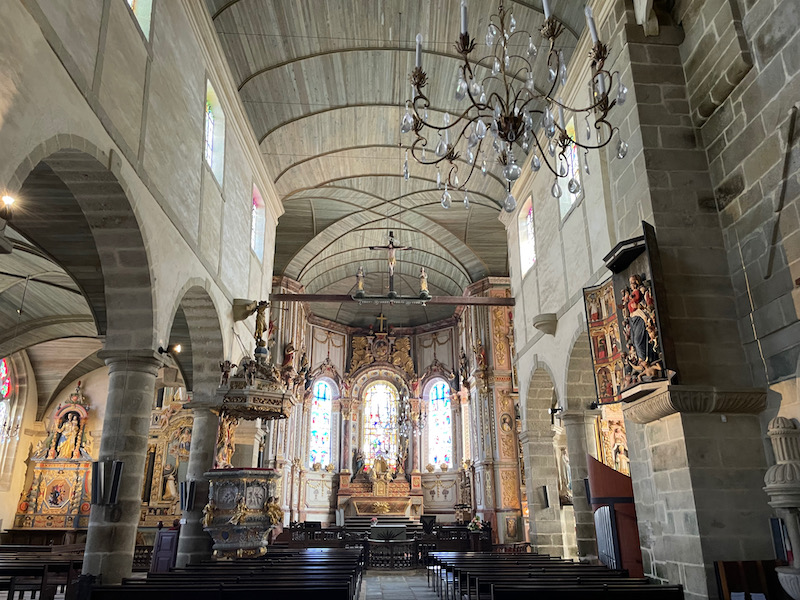
The main altar is actually quite small and there is no altarpiece, as this would have covered the windows. However, all of the walls of the choir are highly-decorated by typical Baroque wooden carvings.
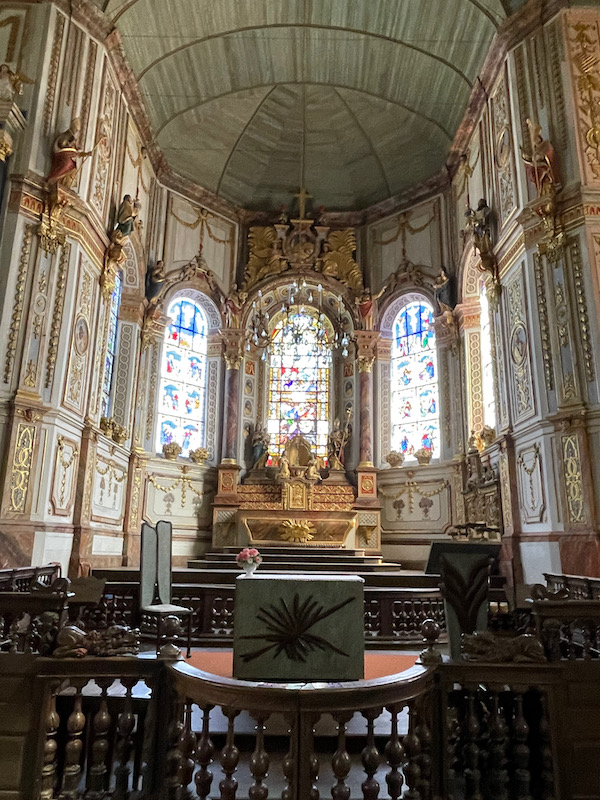
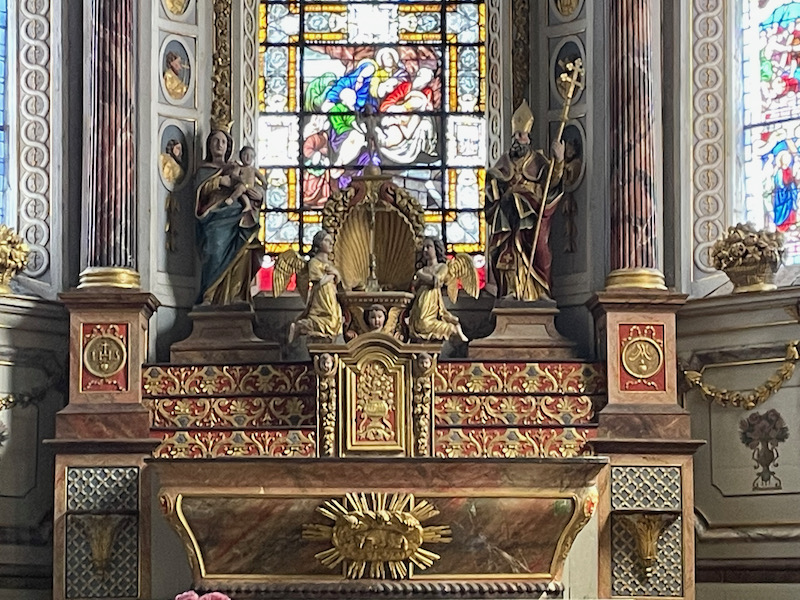
The stained-glass windows were put in place between 1862 and 1868 and are the work of a glassmaker from Morlaix. This first one shows Saint Mathias on the left and Saint Thomas on the right. Matthias was, according to the Acts of the Apostles, chosen by the apostles to replace Judas Iscariot following the betrayal of Jesus by Judas and his subsequent death.
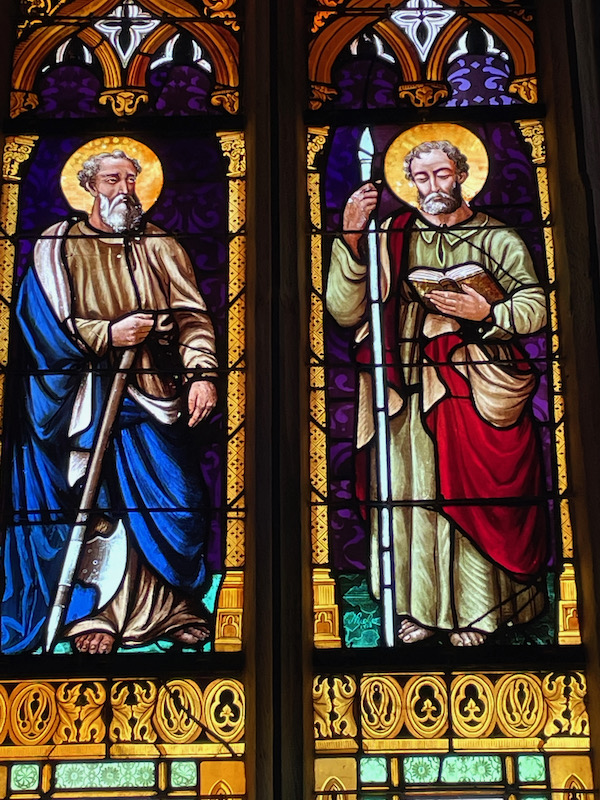
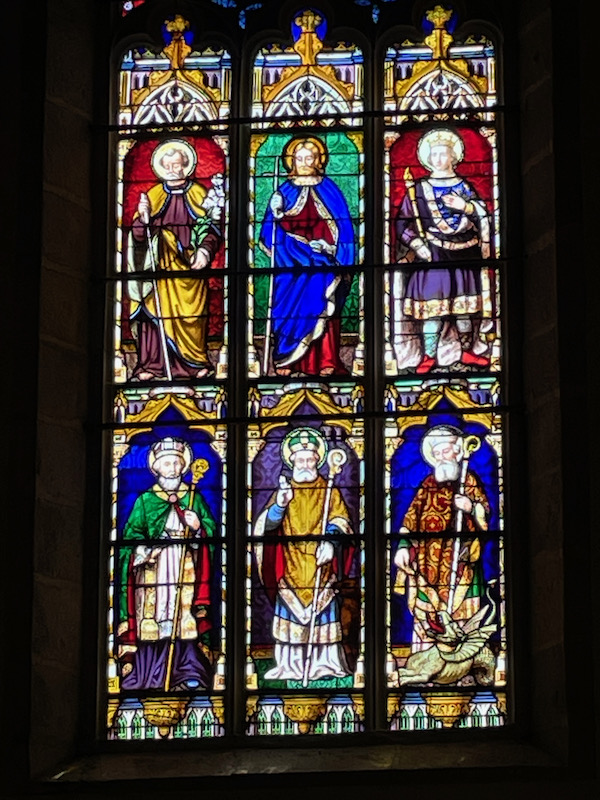
One interesting thing here was the use of statues and scenes that are inside of a case, with doors that could be closed. This is called triptych, or a "shuttered niche". This first one is called the Altarpiece of the Virgin Mary. In the niche itself is a depiction of the Virgin Mary surrounded by the Tree of Jesse. The branches of the tree can be seen below the Virgin Mary and as they spread upwards on the left and the right we see depictions of Jesus' ancestors. On the inside of the doors are paintings depicting scenes from the life of Jesus, the Annunciation, the Visitation, the Announcement to the shepherds, the Presentation of the baby Jesus to the visitors to the stable and the Adoration of the three kings.
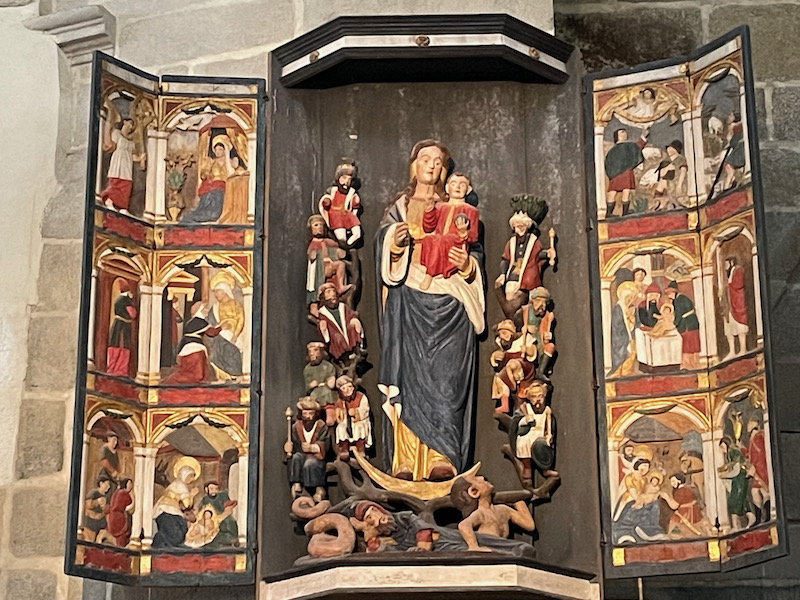
A similar shuttered niche or triptych features Saint Thégonnec with scenes from his life painted on the shutters.
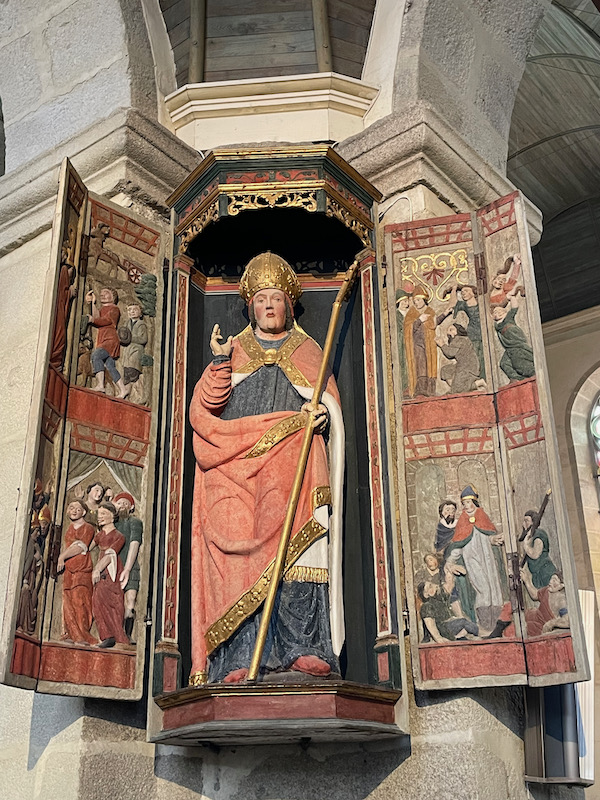
The Rosary altarpiece is on the left-side of the main altar and was done in 1697 and then gilded in 1700. In the upper section, the statue of Saint Louis is on the left and an angel with a child on the right, with the middle section showing Christ, surrounded by angels, receiving the souls which Saint Dominic and Catherine of Sienna have rescued from the flames of purgatory. The lower section has statues of Saint Paul and Saint Joavan on either side of a center section depicting the Virgin Mary handing a rosary to Saint Dominic and Catherine of Sienna.
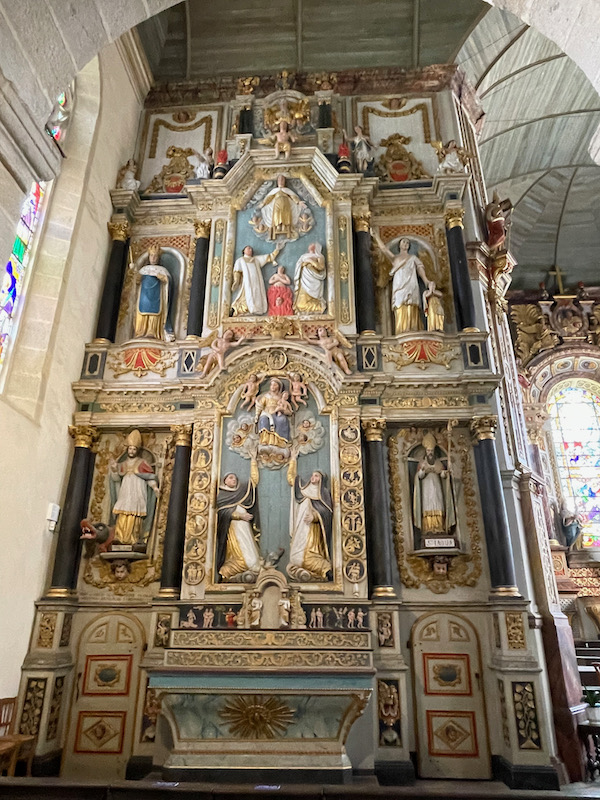
The altarpiece of Sacré-Coeur (sacred heart) was originally made in 1662 for the main altar. It was modified a couple of times and then moved to the right-side of the main altar in 1724. The subject of the altarpiece is the adoration of Jesus by the angels and a painting depicts the nativity and in the corners of the altar are statues of the Virgin Mary and Saint Thégonnec.
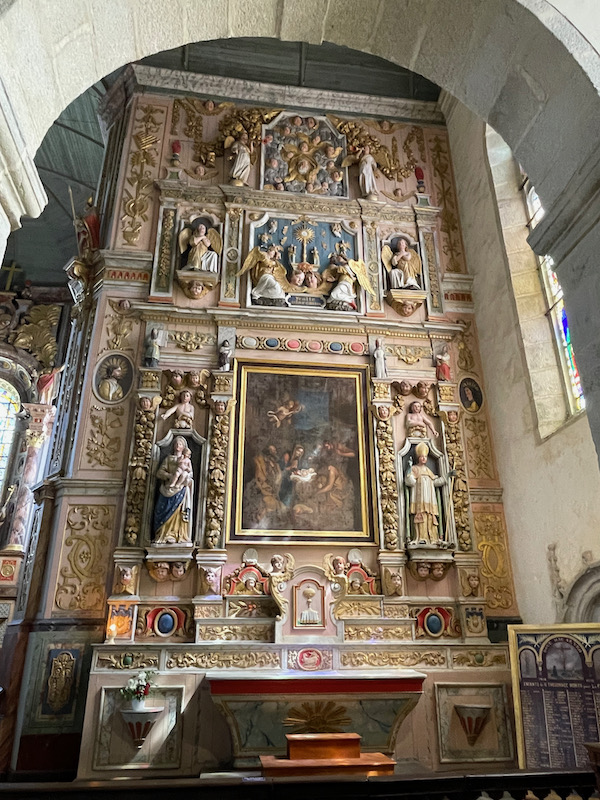
The baroque pulpit dates to 1683. There are 4 female Caryatides representing the Cardinal virtues (Prudence, Temperance, Justice and Fortitude) that support the canopy and added panels depicting the Four Evangelists with their attributes around the base. The balustrade of the stairway is decorated with panels depicting the Church Fathers of the Western church, Ambrose, Jerome, Augustine and Saint Gregory the Great. There is also a relief panel showing Moses receiving the Ten Commandments to the area between the caryatides. I did one up-close picture to try to show the details on the statues, but also the bas-relief panels behind her.
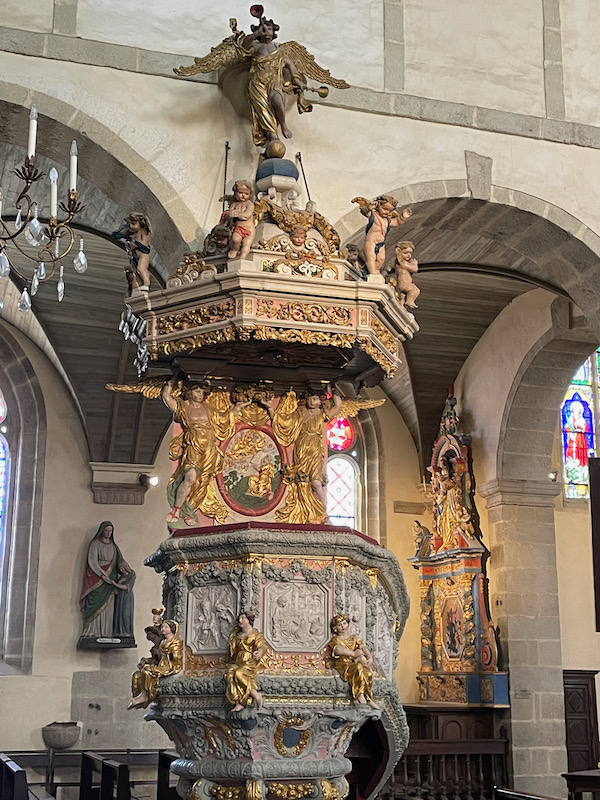
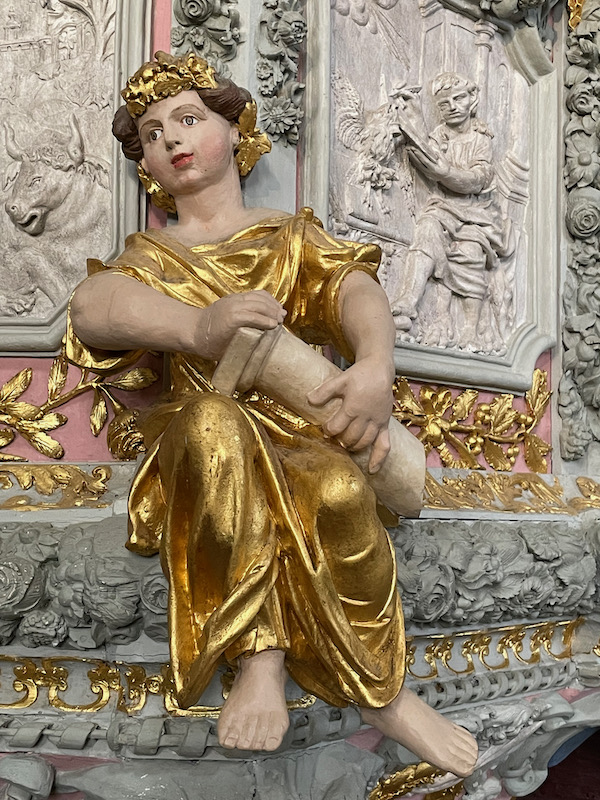
There was a fire here in 1998 which damaged part of the church, including the altarpiece in the North chapel. I have a picture of what it looked like after the fire, and after the reconstruction.
